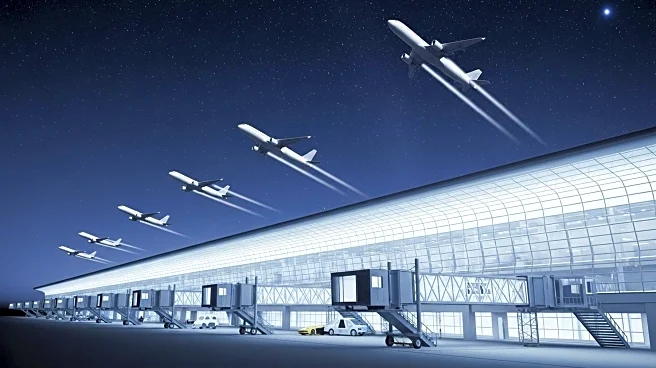What's Happening?
Airports Council International (ACI) World has projected that global commercial air traffic will reach 9.8 billion passengers in 2025, with expectations to surpass 10 billion by 2026. This growth, however, is not uniform across regions. Emerging markets such as Africa, Asia-Pacific, the Middle East, and Latin America are driving this increase, supported by rising demand and the expansion of low-cost carriers. In contrast, mature markets like North America and parts of Europe face a more uncertain outlook due to geopolitical tensions, demographic shifts, and changes in traveler behavior. Notably, North America's passenger traffic is expected to remain flat in 2025, with a contraction in the U.S. domestic market. Meanwhile, international travel is a significant growth driver in Europe, although domestic travel remains below pre-pandemic levels.
Why It's Important?
The projected growth in global passenger traffic highlights the ongoing recovery and expansion of the aviation industry post-pandemic. Emerging markets stand to benefit significantly from this growth, potentially boosting their economies through increased tourism and business travel. However, the uneven growth across regions underscores challenges such as geopolitical tensions and infrastructure limitations that could hinder progress in mature markets. The aviation industry's ability to navigate these challenges will be crucial for sustaining growth and ensuring that infrastructure and policy align with increasing demand. This growth trajectory also emphasizes the need for investment in airport infrastructure and policy adjustments to accommodate rising passenger numbers.
What's Next?
As global passenger traffic continues to grow, the aviation industry will need to focus on infrastructure investment and policy alignment to sustain this trajectory. The industry must also remain resilient to geopolitical and economic uncertainties that could impact growth. In mature markets, addressing demographic shifts and changes in traveler behavior will be essential to revitalize domestic travel. Meanwhile, emerging markets will need to overcome structural challenges such as limited connectivity and regulatory complexities to fully capitalize on growth opportunities. The industry's ability to adapt to these dynamics will shape the future of global air travel.
Beyond the Headlines
The projected growth in global passenger traffic could have broader implications for environmental sustainability, as increased air travel contributes to carbon emissions. The aviation industry may face pressure to adopt greener technologies and practices to mitigate its environmental impact. Additionally, the expansion of low-cost carriers in emerging markets could democratize air travel, making it more accessible to a broader population. However, this could also lead to increased competition and pressure on traditional carriers to innovate and adapt to changing market dynamics.










